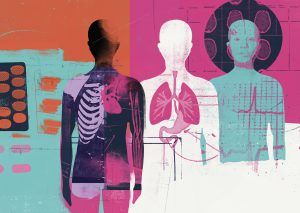Shayla Love in Tonic:
 When something in the body goes wrong, we see a doctor, get examined, get swabbed or draw blood, and usually leave with an answer. But for many patients and families, medical examination doesn’t lead to a diagnosis—and what do they do then? A paper published in the New England Journal of Medicine last week covers the progress of the Undiagnosed Disease Network (UDN), a collection of sites around the country where people can turn when there are no more specialists to see and no more conventional tests to run, to find answers to their health mysteries. The UDN was inspired by a 2008 program called the Undiagnosed Diseases Program (UDP) at the National Institutes of Health (NIH) Clinical Center, which was quickly overwhelmed by patients seeking their services. The UDN was formed in 2014 and is made of 12 sites across the country. They also have two sequencing centers, a group of people who do metabolomics, or study the small molecules made by cells, and a model organisms core, which is a group of people who check genes that might be causing disease in organisms like flies and fish.
When something in the body goes wrong, we see a doctor, get examined, get swabbed or draw blood, and usually leave with an answer. But for many patients and families, medical examination doesn’t lead to a diagnosis—and what do they do then? A paper published in the New England Journal of Medicine last week covers the progress of the Undiagnosed Disease Network (UDN), a collection of sites around the country where people can turn when there are no more specialists to see and no more conventional tests to run, to find answers to their health mysteries. The UDN was inspired by a 2008 program called the Undiagnosed Diseases Program (UDP) at the National Institutes of Health (NIH) Clinical Center, which was quickly overwhelmed by patients seeking their services. The UDN was formed in 2014 and is made of 12 sites across the country. They also have two sequencing centers, a group of people who do metabolomics, or study the small molecules made by cells, and a model organisms core, which is a group of people who check genes that might be causing disease in organisms like flies and fish.
Since its inception, 1,519 patients have been referred to the UDN and 601 were accepted for evaluation. A large bulk of them, 40 percent, had a neurological condition, like Quinn. Of the 382 patients who got a complete evaluation, 132 got a diagnosis, about 35 percent. Most of those diagnoses were found through genetic testing. 21 percent of those who were diagnosed were able to make changes to their therapy, specific to their condition. As of today, the UDN has defined 31 new syndromes.
More here.
